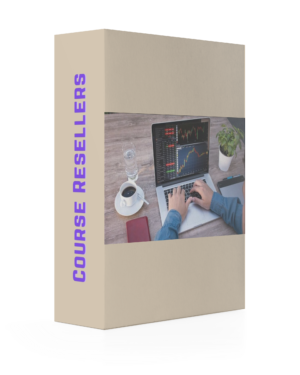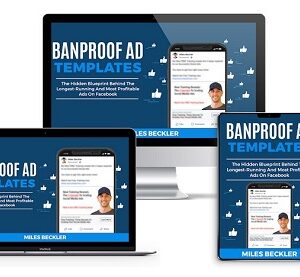Create Stop-Scrolling – Thought-Provoking Visuals – No design background required
Create Stop-Scrolling – Thought-Provoking Visuals – No design background required course is now available at an affordable price. You can check out directly using multiple payment gateway options. If you have any questions or need an alternative payment method, feel free to contact us.
Create stop-scrolling provocative images free from any design context required.
Getting people’s attention has become Herculean in an information-rich environment. Given an average human attention span of roughly eight seconds—shorter than that of a goldfish—it makes sense why we find ourselves always searching for sights that not only catch our eye but also inspire thought. Welcome to the realm of “Create Stop-Scrolling – Thought-Provoking Visuals – No Design Background Required,” where we’ll look at how anybody may produce visually arresting visuals that halt the scroll and stimulate investigation.
The Worth of Images in the Digital Landscape of Today
energising the audience
Visuals are not just lovely visuals; they are also crucial instruments for involving your audience. Studies conducted by 3M Corporation reveal that pictures are handled 60,000 times faster than text. Given such figures, it is clear that if you want to express your concept, images are the most effective tool. Whether your business is teaching, marketing, or content production, beautiful photos can transform your message from everyday to memorable.
The Science of Attention
First one has to understand the psychology of attention. According to Nielsen Norman Group studies, users usually search for key elements and read just 20% of the content on a website. Good communication requires you to reduce challenging ideas into digestible information. Eye-catching graphics help you accomplish. Creating intriguing visuals not only reveals your uniqueness but also allows your stuff to be more appealing and accessible.
Making a Step-by- Step Guide Stopped Scrolling Visuals
Understanding the importance of pictures today, let us investigate the details of creating them—without a design degree!
First determine your target and audience.
Clearly state your intention before exploring the creative aspects. You want to convey what message? Who are the people you meant readers of? Knowing clearly will enable you to produce aesthetically pleasing items. If your audience comprises of young professionals, for instance, consider using sleek, modern designs that fit their taste.
The choice of the suitable instruments comes second.
Creating great visuals does not demand for expensive initiatives. Among such free and simple to use tools include Canva, Piktochart, and Adobe Spark. These sites provide designs and templates that let anybody create professionally looking images effortlessly.
Third step: pay great attention to composition.
Good composition is mostly responsible for visual design. The following are some basic concepts:
Using the Rule of Thirds, evenly divide your canvas both horizontally and vertically. Arange important elements either along these lines or at their cross-roads for a harmonic look.
Emphasize certain items using contrasting hues. For readability, for example, black text can be set against a striking background.
Organize elements so that, under hierarchy, the viewer’s focus travels from the most crucial information to the least under guidance. Stronger colors or larger typefaces may highlight important concepts.
Fourth: implement color psychology.
Colors have emotional power and could significantly influence the reception of your message. Here is a quick synopsis of the connotations connected to some colors:
Red: fire, energy, urgency
Blue: assurance, calm, professionalism
Green: growth, energy, harmony
Yellow: hope, creativity, arresting attention-grabbing
Choose your color scheme deliberately to enhance the emotional response you want for from the audience.
The fifth step is to use texts sensibly.
Texting your photos typically means less is more. Try simplicity and economy of language. Speak in figures your audience will find relevant or in short, strong words. For instance, “Our product increases productivity,” may not be as powerful as “Boost productivity by 50%!” Strong writing of this kind will enable you to highlight your points of view.
Step 6: Incorporate provocative elements.
To create “thought-provoking visuals,” consider include intriguing questions, facts, or comments contradicting the viewpoint of your viewers. An infographic displaying stunning industry numbers, for example, can grab readers’ attention and motivate them to keep studying.
The seventh step is test and edit.
After you have developed your pictures, test their power. Show a small collection of them and receive opinions. Are people starting to see them? Are they providing the expected message? Use these ideas to make your design better. Remember, even the best designers always strive for perfection.
Infographics as examples of stop-scrolling visuals
Infographics are a fantastic way to aesthetically pleasingly present data. According to study from University of Massachusetts, infographics could increase engagement by up to 94%. Combining visuals with concise content can assist you to strongly and effectively explain challenging concepts.
Social Media Notes
Social media outlets thrive on photos. Posts’ images get 650% more engagement than those without. Think about creating appealing images with quotes or statistics relevant for your audience. The trick is to have a consistent look that reflects your brand identity.
Courses
Whether you are showcasing a project or an idea, well-designed slides will be quite important. See pictures to highlight your spoken words rather than replacing them. Remember, rather than detracting from your presentation, your slides should enhance it.
Case Studies: Businesses Who Right
Here are some companies that have successfully used controversial images:
residence Airbnb
Many times, Airbnb’s marketing campaigns include arresting photographs of odd homes. Their “Live There” campaign pushed guests to see locations as local rather than foreign. This approach attracted viewers as well as generated interest in their items.
Geography: Geographic National Notes
Amazing photography is one of National Geographic’s strongest suit. Often presenting a story, these visuals enthrall viewers and motivate them to delve more into the current issues. Their combination of beautiful images with captivating narratives really influences their audience.
The time to design visual stop-screens!
Creating captivating pictures and stop-scrolling is not an impossible ideal just for the designers. With the right tools, techniques, and audience focus, anybody can produce compelling visuals that capture attention and inspire thought.
You then need what? Discover design and allow your creativity to run wild. Whether your intended use is for innovative social media postings, instructive infographics, or compelling presentations, the tools are there at your fingertips.
If you would like more understanding of design principles and visual storytelling, see our linked article [Link to related topic] for ideas and guidance. Remember that every image you create offers an opportunity to effectively get your point of view across to your readers.
Let’s rethink our visual communication one scroll at a time!
Delivery Policy
When will I receive my course?
You will receive a link to download/view your course immediately or within 1 to 24 hrs. It may takes few minutes, also few hours but never more than 24 hrs. Due to different time zone reasons.
How is my course delivered?
We share courses through Google Drive, so once your order is complete, you’ll receive an email with a google drive folder access link to view the course in your email.
To avoid any delay in delivery, please provide a Google mail and enter your email address correctly in the Checkout Page.
In case you submit a wrong email address, please contact us to resend the course to the correct email.
Where can I find my course?
Once your order is complete, a link to download/view the course will be sent to your email.





